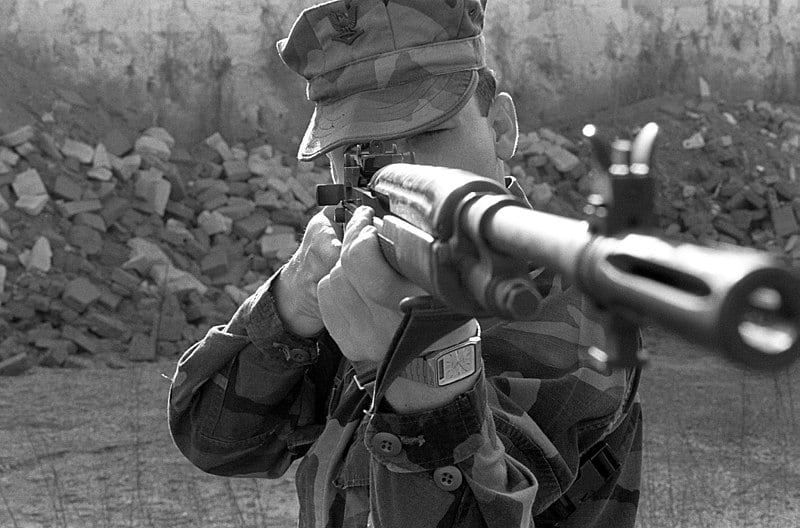In April 1958, the government-owned Springfield Armory in Massachusetts initiated production of the M14 rifle. The product of nearly 15 years of research and development, the new weapon could switch between semi-automatic and fully automatic modes to increase firepower. But production started slowly, and early operational experience identified problems.
The primary complaints were fragile receivers, malformed bolts, poor accuracy and instability during automatic fire. All of those problems but the last were fixed by better quality control, and the stability issue was addressed by limiting 90 percent of the rifles to semi-automatic mode. There were efforts to manufacture an M14 version that would serve as a rifle squad’s automatic weapon, including the specially designed M14A1, but they either failed or proved disappointing.
The M14’s gas-operating firing system was based on that of the M1. Also like the M1, the M14 stored a cleaning kit in the butt-trap. The rifle had a front blade sight and peep sight, the latter adjustable for windage and range in 100-meter increments out to 1,000 meters. The M14 could be used with an M6 bayonet and M76 rifle grenade launcher attachment. An M2 bipod could be installed on the ones with the automatic-fire mode.
You Might Also Like:
The Bad Boy Commander of Operation Bolo
The Battle for Hearts and Minds
Bullets From the Rear
The M14 was the standard infantry rifle for all Army and Marine units that deployed to Vietnam in 1965, but Defense Secretary Robert McNamara ended procurement in 1964, selecting the M16 as a replacement. By 1970, only a handful of M14s remained in Vietnam.

Flawed and designed for a war with the Soviet Union in Europe that never came, the M14 with its large 7.62 mm round was America’s last full-power, or “battle rifle,” before the age of “assault rifles,” such as the American M16 and Soviet AK-47. The M14 served as the standard infantry rifle for only seven years. However, variants with improved accuracy entered service in the 1990s, and the rifle’s long-range striking power has made it the weapon of choice for many units in Afghanistan, where combat engagement ranges often exceed 300 meters and require rounds that can penetrate building walls—jobs not as well performed by the shorter-range, smaller-round (5.56 mm) M16 family.
- Rounds: 7.62-by- 51 mm ball, armor-piercing and tracer
- Magazine: 20 rounds
- Weight: 10.7 pounds loaded; 12 pounds with bipod
- Overall length: 44.3 inches Barrel length: 22 inches
- Maximum rate of fire: 750 rounds per minute
- Effective rate (in combat): 60 rpm automatic; 40 rpm semi-automatic
- Muzzle velocity: 850 meters (2,801 feet) per second
- Maximum effective range: 460 meters (500 yards)
Originally published in the April 2018 issue of Vietnam Magazine. To subscribe, click here.





